INTERVIEW with DR. KATERINA SERVI, Archaeologist with a graduate degree in Museology
Cultural pilot: a brief premise
How to build an appropriate extended reality experience for cultural scenarios?
BRIDGES consortium presents two interviews to better understand what is requested to design visitors’ experience for informal learning and cultural applications.
If you miss the first interview, read it here.
The interview
- Dear Katerina, please introduce yourself, your job and your role in the BRIDGES project.
My name is Katerina Servi and I am an Archaeologist with a graduate degree in Museology. I am, also, an author of several children’s books, specializing in non-fiction. I have worked in advertising, for more than a decade, as a copywriter. Since 2004, I am a freelancer, working mostly on projects concerning museums, archaeological sites and cultural organizations. My role in the BRIDGES project is that of a storyteller, i.e. to insert elements of storytelling into the experience.
- What is your main objective?
Our main objective is to create a memorable experience, combining historical facts and edutainment. Ideally, we would like to help people “see”, “listen” and “learn” about life in Athens circa 5th or 4th Century B.C.E, but also, most importantly, “feel”, as much as possible, like an ancient Athenian, man, woman or child.
- Could you please describe your concept of “experiential”?
This is a very popular concept amongst today’s cultural heritage practitioners. In my opinion there are different ways to create experiential activities. The key word is probably active participation. People like to touch ancient artifacts, even replicas, to be involved in creative activities, to make choices, while they use a mobile phone app. In the case of BRIDGES, we intend to combine hands-on activities with role-playing, a very interesting and involving educating / entertaining method, already used in different fields such as in museum theatre, for example along the lines of the kinesthetic theory of learning.
- What features does a museum need to have, or need to equip itself with, in order to offer its audience an informal learning experience using XR?
It needs to have the proper equipment and also hire specialized personnel that can create such an experience, both technically and conceptually. On the conceptual part, a museum must think “out of the box” and a way to do so is to have a multidisciplinary mentality. As for the technical part, I am afraid I am not the right person to offer more details. People working for the BRIDGES program such as Bolt Virtual or the Foundation of the Hellenic World are more suited to give an answer!
- What are the challenges in combining gamification and historical/cultural appropriateness for informal learning experiences?
A tough question on a tough matter. Such experiences have to be interesting, meaningful, entertaining, but also historically accurate and as “believable” as possible. In all aspects, creators of informal learning experiences struggle to find the “right” balance between “seriousness”, as in serious games, and entertainment. Moreover, as Kleanthis already mentioned, when you refer to remote historical eras, for which there is little and fragmentary information, you have to be very careful on how you represent the past, as you have to fill the «gaps» with justified speculations.
- Could you please describe practically what “storytelling” deals with this activity?
Storytelling is a way to trigger historical empathy, i.e. engage visitors emotively with people living in the past. In our case, we ask visitors to play roles and take part, not only in activities, but also in a real-life situations, taking place in an Athenian house of the 5th century B.C.E. Visitors are asked to choose their role (father, mother, brother, sister of a typical member family or that of a philosopher). Then, they enter the house as avatars, guests of a wealthy Athenian who throws a goodbye-dinner party in honor of his son, going off to war in a few days. During the experience avatars are immersed in a digital environment, where they interact with digital characters, see and learn things concerning daily life in Ancient Athens, but they are also involved in a parallel story: Alcibiades, an infamous politician of the era, sends an invitation for a dinner party to the son of the host. The invitation provokes tension and fiery discussions between digital characters, as Alcibiades represents the pro-war Athenians, while the host, respectively, the anti-war conservative ones. Thus, avatars have the opportunity to plunge into an intense political / social struggle of the era and even, through role playing, take part into the conversations, and express their own opinion.
- How Bridges technology can improve your work?
Bridges technology is of the outmost importance. It can create an appealing and realistic digital environment, it can also enrich the experience thanks to the digital characters and other elements, such as the use of smells! Generally speaking, technology has a lot to offer to the creation of experiential informal learning experiences in museums and cultural heritage sites, as well as in other fields of human activity.



